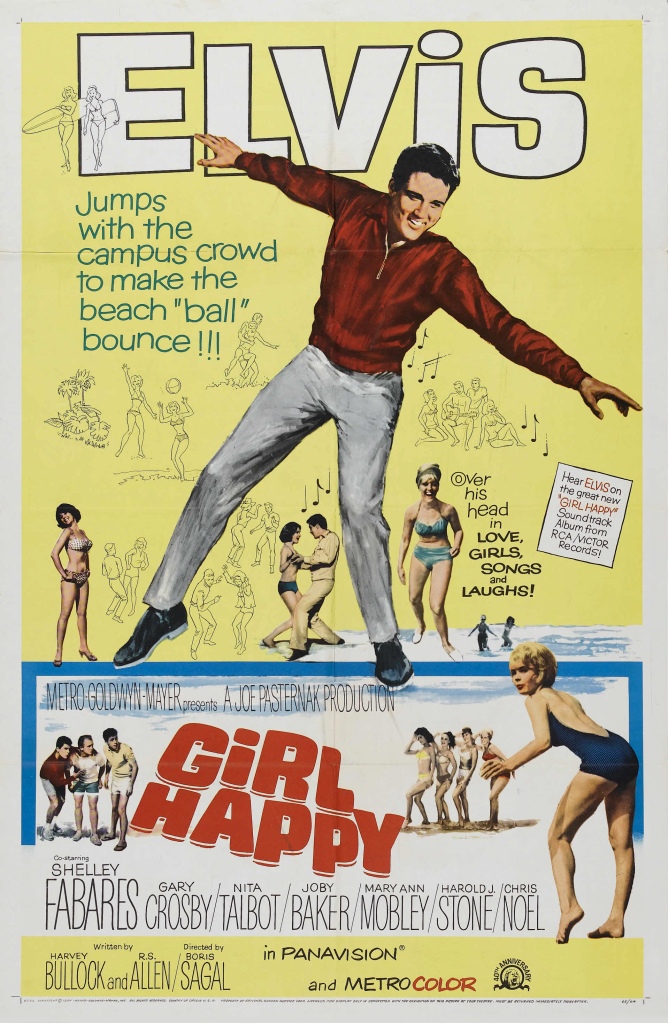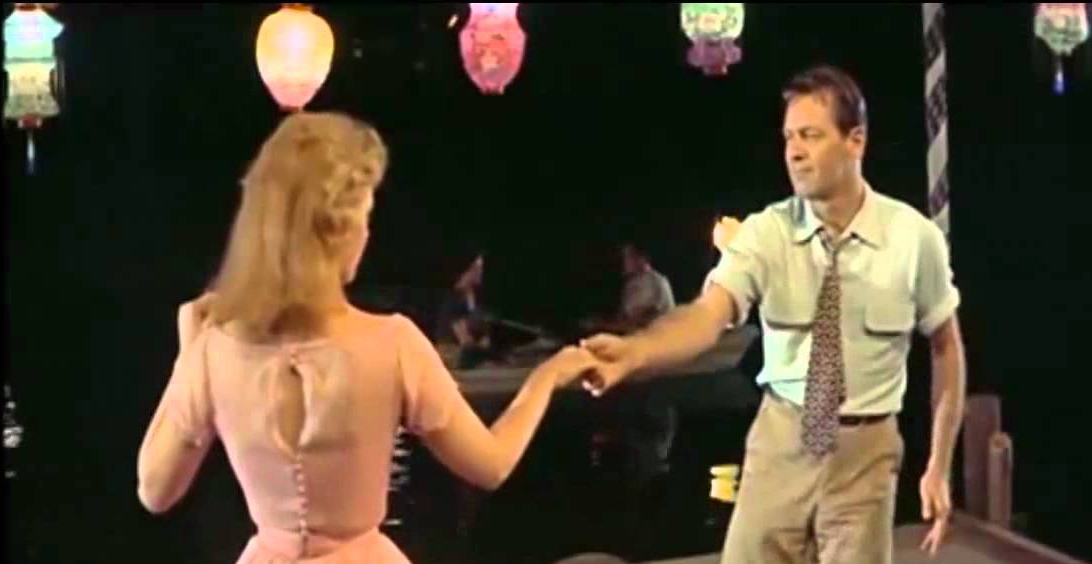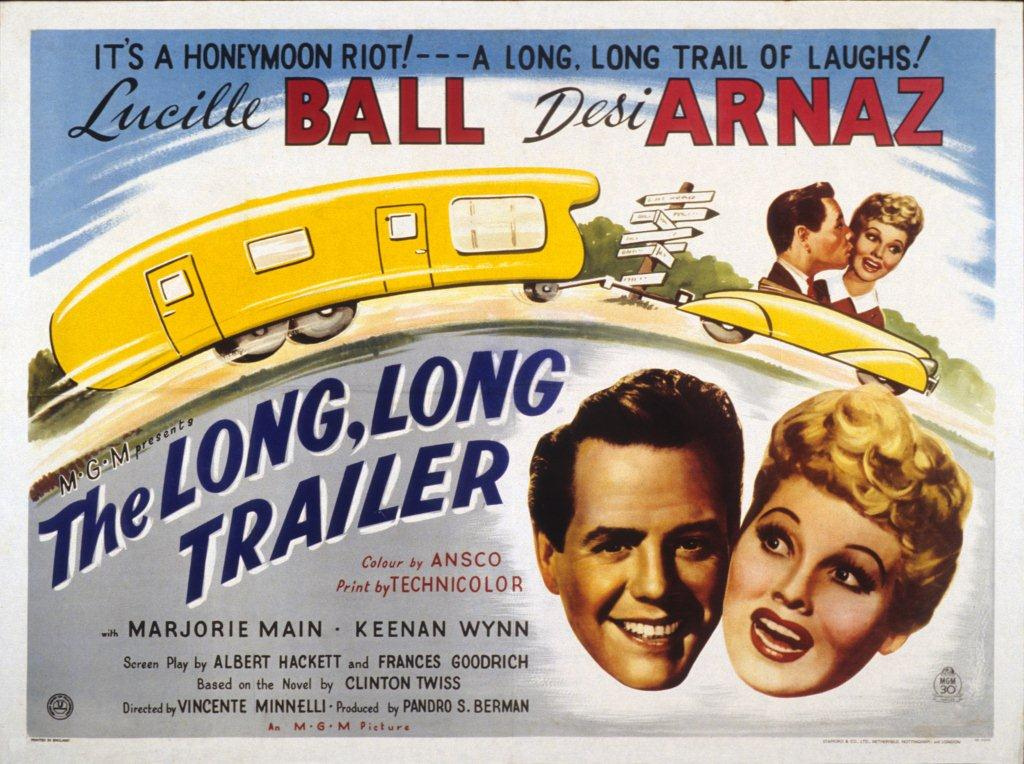May 16th is upon us again. It’s National Classic Movie Day. Though honestly, I’m sure for many of us, EVERYDAY is National Classic Movie Day. For this year’s event, Classic Film and TV Cafe has asked us to list six favorite films, each from a different decade–starting with the 1920s through the 1970s. We were also given another option of the 1930s-1980s, but since my husband I have been trying to watch more silent films, I’m going to take the original challenge. To ease ourselves into silent films, we’ve started with the classic comedians–an obvious and easy jumping off point. Good comedy is universal and timeless. Since I’ve written about a lot of my favorite films over the years and have a tendency to be verbose and not wanting to bore everyone with yet another dissertation detailing my love for The Long Long Trailer, I’m going to try and change things up a bit by selecting some favorites that I don’t *think* I’ve talked about yet.
1920s- The Freshman (1925)
Starring: Harold Lloyd & Jobyna Ralston
Plot: Lloyd stars as “Harold Lamb,” an incoming freshman who is eager to begin his studies at Tate University. He has saved up quite a tidy sum, $485 ($7400 in 2021 dollars), to use as spending money while enrolled in college. While on the train, Harold meets Peggy (Ralston) and the two are smitten with one another. While at Tate, Harold decides that the best way to fit in is to emulate his favorite movie star, known as “The College Hero” in a series of films. Upon introducing himself to a potential friend, Harold performs The College Hero’s jig and adopting the nickname, “Speedy.” However, unbeknownst to Harold, his attempts to be cool and fit in make him the object of everyone’s jokes, especially the college bully. The students’ laughter makes Harold think that he’s fitting in and he’s unaware that he is the school laughing stock. His only true friend in the film is Peggy, his landlady’s daughter. Harold ends up trying out for the football team, but his obvious lack of athleticism does not impress the coach. The star football player, wanting to continue to make fun of Harold, convinces the coach to hire Harold as the waterboy, hereby making Harold think that he’s made the team. The star football player’s ruse may end up haunting him and the team later.
My Favorite Part: My favorite part of this film is when Harold is at the Fall Frolic in an unfinished suit. His tailor has all the pieces of the suit attached with some very loose stitches. Harold opts to wear the suit while the tailor hides behind a curtain, hoping to casually finishing sewing Harold’s suit. While Harold tries to partake in the Fall Frolic activities, his suit starts falling apart.
1930s- Alice Adams (1935)
Starring: Katharine Hepburn & Fred MacMurray
Plot: Hepburn stars as the titular Alice Adams, a young woman from the “wrong side of the tracks,” at least from Alice’s perception. In reality, there’s nothing wrong with the Adams’ home. It is a nice, clean home. It’s not fancy, but it’s functional and well-maintained. However, it is obvious that the Adamses are unhappy with their lot in life. Mr. Adams (Fred Stone) is an invalid and works as a clerk at Mr. Lamb’s (Charley Grapewin) glue factory. Mr. Lamb as been very nice and patient with Mr. Adams and his illness. However, Mrs. Adams (Ann Shoemaker) is frustrated with her husband’s lack of motivation or ambition to do anything to improve their financial situation. Alice’s brother, Walter (Frank Albertson), is a gambling addict and is unable to hold down a job. He also fraternizes with African-Americans, which at the time, was seen as unseemly (and embarrassing) behavior.
Alice is invited to a dance hosted by a wealthy peer of hers, Mildred Palmer (Evelyn Venable). Alice tries to put on airs, despite being escorted by her brother and carrying a bouquet of violets that she harvested outside. In an attempt to prove herself worthy of attending this party, she tries to impress her peers with haughty behavior and conversation, but they are not impressed and she is essentially shunned. While at the dance, she meets the wealthy Arthur Russell (MacMurray) who sees through her shtick but is nonetheless charmed. He makes it known that he wishes to see her more often and Alice, worried that he won’t be interested in her if he knew her true social standing (though he already does), tries to continue her charade.
My Favorite Part: The family dinner is hilarious and heartbreaking all at once. Alice invites Arthur to have dinner with her family. Alice hires a maid, Malena (Hattie McDaniel), to keep up the charade. Despite being blistering hot outside, the entire family dresses in formal attire. Alice plans this absurd (and very hot and heavy) meal made up of fancy delicacies, but Malena’s poor cooking skills are not up to par with the food Alice wants to serve. Malena provides the comic relief of the dinner with her unimpressed facial expressions and genuinely uncouth behavior. Poor Alice is collapsing emotionally with each and everything that goes wrong. Arthur, bless his heart, stoically carries on despite the disastrous evening.
1940s- Gilda (1946)
Starring: Rita Hayworth & Glenn Ford
Plot: Johnny Farrell (Ford) is an American gambler, newly arrived to Buenos Aires, Argentina. When the film opens, Johnny is hustling some gangsters outside during a game of craps. Johnny wins a large sum of money using loaded dice. When the gangsters discover Johnny’s ruse they are about to beat him up when Ballin Mundson (George Macready), a stranger, steps in and rescues Johnny. Ballin owns a fancy casino and brings Johnny there, but warns him not to cheat. However, once a cheater, always a cheater and Johnny is caught cheating at blackjack. After Ballin catches him cheating again, Johnny convinces him to give him a job and soon becomes the manager.
One day, Ballin comes back from a trip announcing that he’s taken a new wife, despite having only known her for a day. He takes Johnny to meet his new wife, Gilda (Hayworth), and Johnny is shocked. The smile on Gilda’s face quickly fades. It is obvious that these two know each other and have a past. What kind of past remains to be seen. Ballin assigns Johnny to be Gilda’s keeper of sorts. Gilda and Johnny have a very intense love/hate relationship. Gilda at one point says to Johnny: “I hate you so much, that I would destroy myself to take you down with me.” However, in spite of how much they say they hate each other, they’re also always about 5 minutes away from jumping into the sack with one another. To irritate Johnny and get his goat, Gilda begins cavorting with various men at all hours of the evening. Johnny has to keep intervening out of loyalty to Ballin. However, at some point, the tension between Gilda and Johnny begins to take over and they’re unable to contain themselves. Ballin observes his manager and wife’s lust for each other and takes matters into his own hands.
My Favorite Part: My absolute favorite part is Gilda’s floor-length sequin coat. But plot wise, the classic “Put the Blame on Mame” song is definitely a highlight. I also really love the scenes at Carnival. Gilda’s gaucho outfit is amazing.
1950s- His Kind of Woman (1951)
Starring: Robert Mitchum, Jane Russell, Vincent Price & Raymond Burr
Plot: Robert Mitchum plays Dan Millner, a professional gambler. At the beginning of the film, he is very much down on his luck. One night, after being ambushed by a group of thugs, he is brought to one of the more senior thugs and is offered a “too good to be true” job. For $50k, Dan has to spend a year in Mexico. Figuring that there’s got to be a catch, but also figuring that he has nothing to lose, Dan accepts a $5k advance and takes a chartered flight to the isolated Morro’s Lodge in Mexico. While on his flight, Dan meets Lenore Brent (Russell). Lenore very matter-of-factly tells Dan that she has a million dollars. Dan is attracted to her but disappointed to learn that she’s involved with another guest at the resort, famous actor Mark Cardigan (Price). While milling around the resort, Dan overhears two guests: Martin Kraft and a man by the name of Thompson (Jim “Thurston Howell III” Backus) discussing a plot that Dan suspects is related to the $50k he was offered. The two men give Dan $10k hush money and tell him that someone will be arriving soon to go over the plan with him.
Around the same time, an undercover agent from the United States Immigration and Naturalization Service shows up stating that underworld boss, Nick Ferraro (Raymond Burr) is scheming to try and get back into the US. Four years prior, he’d been deported to Italy. At this point, as far as I can tell, Ferraro is planning a “Face/Off” situation where he and Dan, supposedly of similar height and build, will literally switch faces. It seems that Martin Kraft is a plastic surgeon, who is armed with some sort of anesthesia that will allow him to perform the face switching procedure. At some point, Dan is kidnapped and under duress on Ferraro’s boat and it becomes up to Mark Cardigan to head an expedition to save Dan.
My Favorite Part: The entire scene involving Mark Cardigan heading up the rescue mission. Vincent Price’s hamminess makes the scene and it wouldn’t have been anywhere near as interesting or funny without Price. Price brings some much wanted levity to the film, especially while Robert Mitchum faces the idea of having to literally have his face ripped off and switched with Raymond Burr’s. I love the scene where Mark valiantly boards a small boat, only to have it sink immediately because it’s overloaded. I love the hilarious super long (and I imagine, heavy, especially water-logged) cape that he wears while he mans the (larger) rescue boat.
1960s- Girl Happy (1965)
Starring: Elvis Presley & Shelley Fabares
Plot: Elvis plays Rusty Wells, a nightclub singer (duh) who along with the other three members of his quartet have just ended their gig at a nightclub in Chicago. They plan to travel to Fort Lauderdale, Florida for Spring Break before moving onto their next job. However, the nightclub owner, “Big Frank,” messes up their plans when he extends their contract and they have to cancel their trip.
At the same time, Big Frank’s 18-year old college-aged daughter, Valerie (Fabares), is also planning on traveling to Fort Lauderdale for spring break. Despite his daughter’s legal adult status, Big Frank is terrified at the idea of letting his daughter travel so far away with just her friends in tow. Rusty sees his boss’ worry, and still wanting to go to Florida, comes up with the brilliant idea of offering to chaperone Valerie. Big Frank likes the idea and offers to bankroll Rusty and his friends’ trip. While in Fort Lauderdale, Rusty struggles with keeping an Italian playboy from lusting after Valerie and maintaining a semblance of a relationship with a “good time girl” (i.e. loose girl) Deena (Mary Ann Mobley). Rusty has to keep bailing on Deena when duty calls and she quickly grows tired of him. But because it’s an Elvis movie and he has to find himself in some sort of love triangle, Deena continues to maintain an interest in Rusty throughout the entire film.
And because this is an Elvis movie and because it’s a tried and true plot with one party being hired to chaperone or hang out with (or what have you) the other. You know that they’ll fall in love and you know that the person being chaperoned will find out. Despite the formulaic Elvis movies and plotlines, I still love it. His movies are fluffy, but they’re fun. And sometimes a fun movie is all that is needed.
My Favorite Part: I love the part when Elvis dresses up in Nina Talbot’s dress to escape from Officer Jackie Coogan’s jail. Elvis had dug a large hole and burrowed himself into the jail cell so that he could save Valerie and the other women.
1970s- The Muppet Movie (1979)
Starring: Kermit the Frog & Fozzie Bear
Plot: The film opens with all of the Muppets sitting together in an auditorium, waiting to watch their film. This film shows how all the Muppets met. We meet Kermit the Frog sitting in a boat in a pond, singing “Rainbow Connection” while strumming his banjo. A talent agent (Dom Deluise) who just happens to be at the same pond, hears Kermit’s song and says that he could be a Hollywood star. I mean obviously, it’s a singing frog playing the banjo! What more could anyone want? Kermit loves the idea of making millions of people happy and sets off for Hollywood. Along the way, he meets a terrible (but awesome) stand-up comedian, Fozzie Bear. Kermit invites Fozzie to Hollywood and the two set off in Fozzie’s Studebaker. This brings about my favorite quote from the film, “A frog and a bear, seeing America.”
Along the way, Kermit and Fozzie meet Dr. Teeth and the Electric Mayhem (which includes Animal), the band’s manager, Scooter, Gonzo and his girlfriend (Camilla the Chicken), Sweetums, Miss Piggy, Rowlf, Bunsen Honeydew, and Beaker. There are a million of celebrity cameos: James Coburn, Madeline Kahn, Telly Savalas, Milton Berle, Bob Hope, Steve Martin, Mel Brooks, Cloris Leachman, and perhaps the greatest cameo of them all… ORSON WELLES.
My Favorite Part: This entire film is hilarious. But I really love the part where Kermit the Frog and Miss Peggy go out for a romantic dinner. They are greeted by a snarky and rude waiter (Steve Martin) who wears shorty shorts, offers them a straw for their bottle-capped Idaho champagne (after offering to let them smell the bottlecap, of course).




































